Here are the main results on gravitational waves/B-modes from the CMB, as reported by the BICEP2 experiment. For background see my previous post. All of the BICEP2 results and plots are here.
First, the best fit to r, the ratio of gravitational waves to density perturbations:
Rumors were right, and r = 0.2 is the best fit (with errors plus .07, minus .05). Here is the power spectrum (amplitude as a function of angular scale on the sky):
And here we have the contours in r/nS space, analogous to the Planck constraints we showed yesterday. Note that this plot crucially allows for “running” of the spectrum of density perturbations signal — the size of the fluctuations changes in a more complicated way than as a power law in wavelength. If running weren’t included, the different constraints would seem more incompatible.
Comparison with other limits (BICEP2 results are black dots at bottom):
Finally, here is a map of the actual B-mode part of the signal:
Overall, an amazing result (if it holds up!). It implies that the energy scale of inflation is about 2×1016 GeV — pretty close to the Planck scale (2×1018 GeV). An unprecedented view of the earliest moments in the history of the universe.
[From earlier.] Here is an email from BICEP2 PI John Kovac:
Dear friends and colleagues,
We invite you to join us tomorrow (Monday, 17 March) for a special webcast presenting the first results from the BICEP2 CMB telescope. The webcast will begin with a presentation for scientists 10:45-11:30 EDT, followed by a news conference 12:00-1:00 EDT.
You can join the webcast from the link at http://www.cfa.harvard.edu/news/news_conferences.html.
Papers and data products will be available at 10:45 EDT from http://bicepkeck.org.
We apologize for any duplicate copies of this notice, and would be grateful if you would help share this beyond our limited lists to any colleagues who may be interested within our CMB and broader science communities.
thank you,
John Kovac, Clem Pryke, Jamie Bock, Chao-Lin Kuoon behalf of
The BICEP2 Collaboration
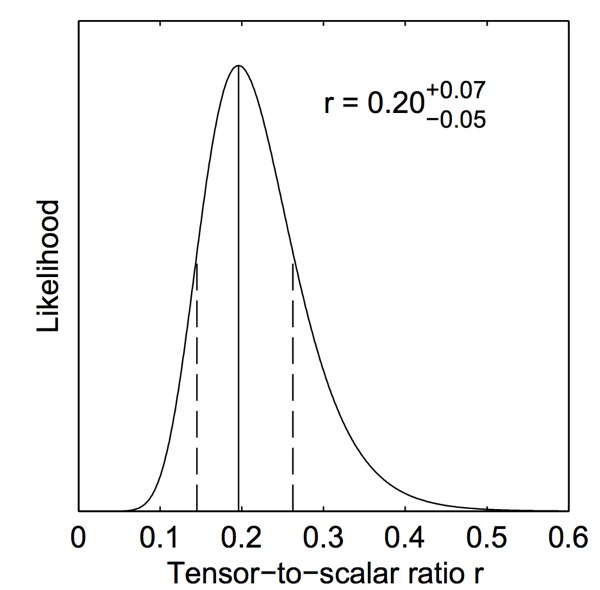
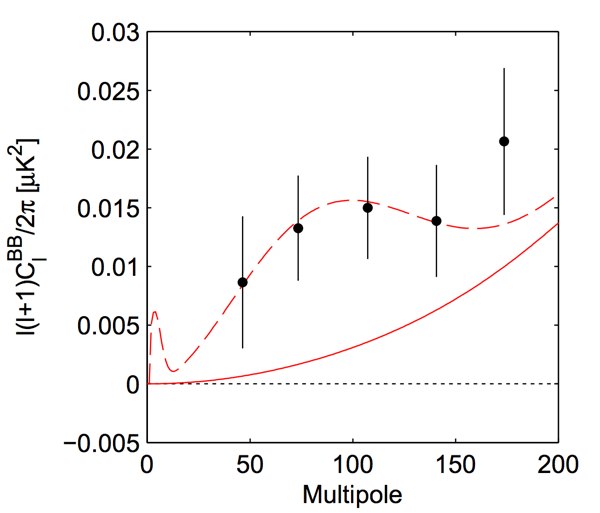
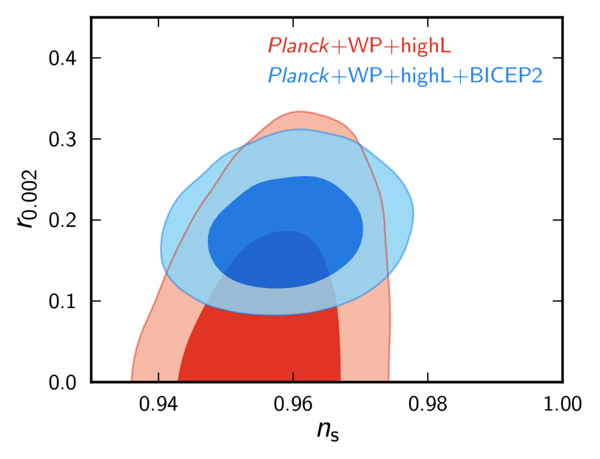
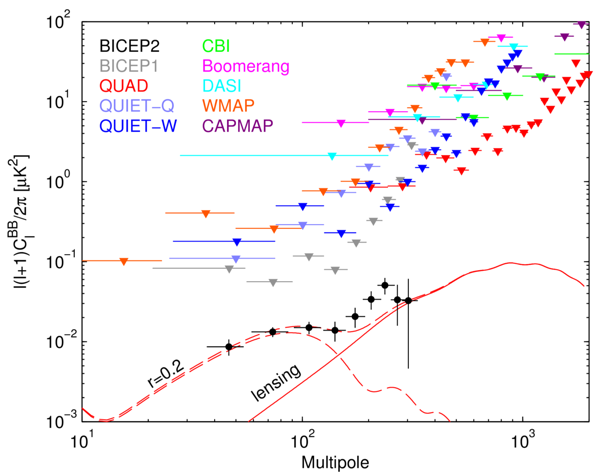
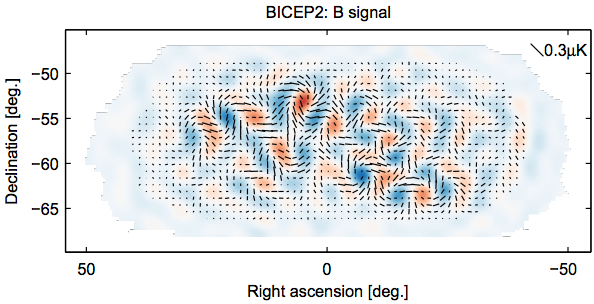
The B-modes is another indirect experimental evidence of gravitational wave, we have already had other indirect evidence, e.g. the orbital decay. I think the physical significance of the BICEP measurement is about the inflation. However, the inflation model still has many conceptual problems, the model itself is more like the Bohr’s atom models before the discovery of the real consistent quantum mechanics. Perhaps, certain underlying old view of the spacetime is needed to be abandoned, to yield a consistent future theory.
Pingback: BICEP2, Primordial Gravity Waves, and Cosmic Inflation » The Physics MillThe Physics Mill
Pingback: BICEP2 Takes a Peek at Cosmic Inflation | Whiskey…Tango…Foxtrot?
Pingback: Naturalness in the NYT | Sean Carroll
The BICEP2 Collaboration reported to have detected gravitational waves generated by cosmic inflation (P. A. R. Ade et al. http://arxiv.org/abs/1403.3985 ).
.
This claim is supported by several arguments.
.
(1) The shape of the signal is what one can expect of gravitational waves generated by cosmic inflation (figs. 2, 6, 9, and 10 of the BICEP2 paper). The signal strength is 5.9 sigma.
.
(2) Leading experts in the field reacted positively on this claim (R. Cowen, Nature 507 (2014) 281-283).
.
However, two arguments do not support this claim.
.
(1) The maximum likelihood value of the tensor to scalar ratio is r=0.16 (ch. 11.1 of the BICEP2 paper). By contrast, both the South Pole Telescope Collaboration (K. T. Story et al., Astrophys. J. 779 (2013) 86) and the Planck Collaboration (P. A. R. Ade et al., http://arxiv.rg/abs/1303.5076) reported an upper limit of r=0.11 at 95% confidence level. Both teams should have observed a signal of approximately 3 sigma if the BICEP2 result were true.
.
The BICEP2 Collaboration pointed out a loophole. Agreement with the data by SPT and Planck is possible if the running spectral index is d n_s / d ln k = -0.022 (ch. 11.3 of the BICEP2 paper). However, the measured upper limit for the absolute value of this running spectral index is 0.01 (table 1 of M. Tegmark, J. Cosmology and Astropart. Phys. 04 (2005) 001).
.
(2) The signal reported by the BICEP2 Collaboration requires that cosmic inflation takes place at the energy 10^16 GeV, i. e. the GUT scale. Grand unification causes the mass hierarchy problem (the mass of the W- and Z-bosons is not of the GUT scale). This problem can be solved by supersymmetry. However, there are two arguments against supersymmetry.
.
(i) Both the ATLAS Collaboration (G. Aad et al., Phys. Rev. Lett. 106 (2011) 131802) and the CMS Collaboration (S. Chatrchyan et al., Phys. Rev. Lett. 107 (2011) 221804) of the LHC (Large Hadron Collider) have not observed squarks and gluinos.
.
(ii) The LUX Collaboration has not observed any neutralinos from WIMP CDM (weakly interacting massive particles cold dark matter) (D. S. Akerib et al., http://arxiv.org/abs/1310.8214 ).
.
My conclusion is not definitive. I will accept the reality of gravitational waves generated by cosmic inflation if
.
(1) a second team confirms the large tensor to scalar ratio of r=0.16 and
.
(2) either both the South Pole Telescope Collaboration and the Planck Collaboration reanalyse their data and find a positive signal or the running spectral index is indeed of the order -0.022.
.
Dr. Rainer W. Kühne
kuehne70(at)gmx.de
http://independent.academia.edu/RainerKuehne
.
Pingback: BICEP2 and its implication | The Great Vindications